The Six Species Of Spoonbills
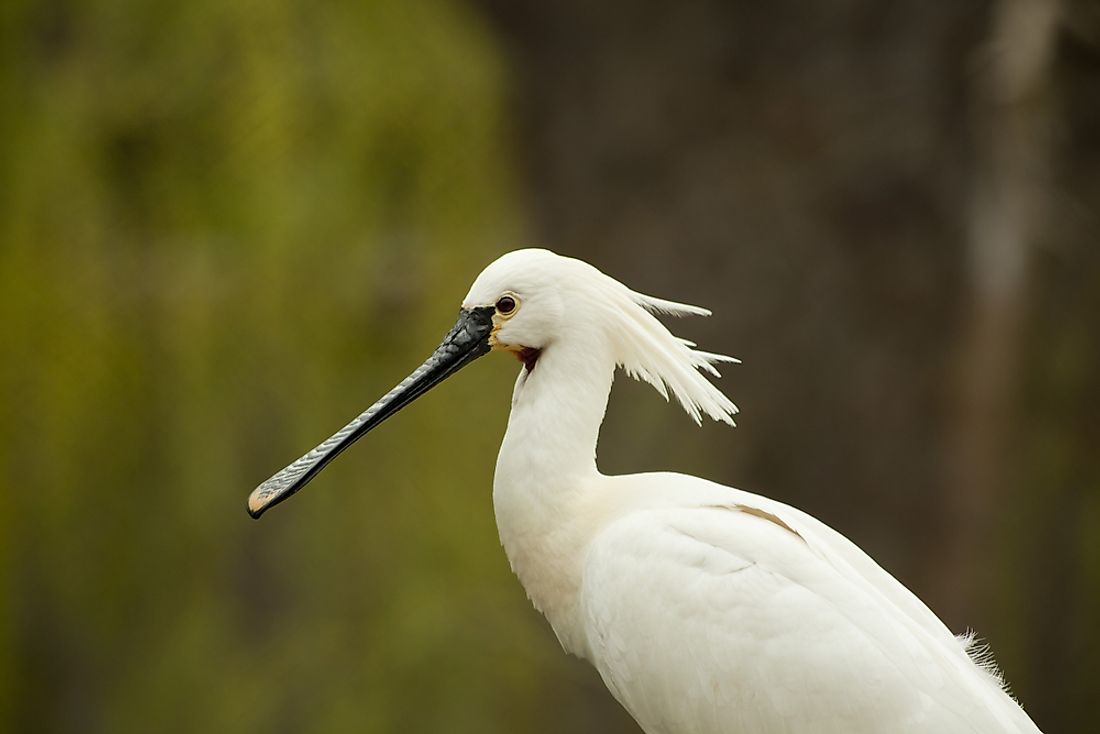
Spoonbills refer to any of the six extant species of wading birds of the family Threskiornithidae and genus Platalea. The most distinguishing feature of these birds is their flat, spatulate bills. The birds feed by moving in shallow waters and sweeping their half-opened bills from side to side. As soon as an aquatic creature comes in contact with the bill, it is shut tight. The birds are believed to be seasonally monogamous. They build their nests on trees or reed beds in their habitat. Both parents take care of the offspring and feed the chicks by partial regurgitation.
Here is a description of the six species of spoonbills.
6. Eurasian Spoonbill/Common Spoonbill
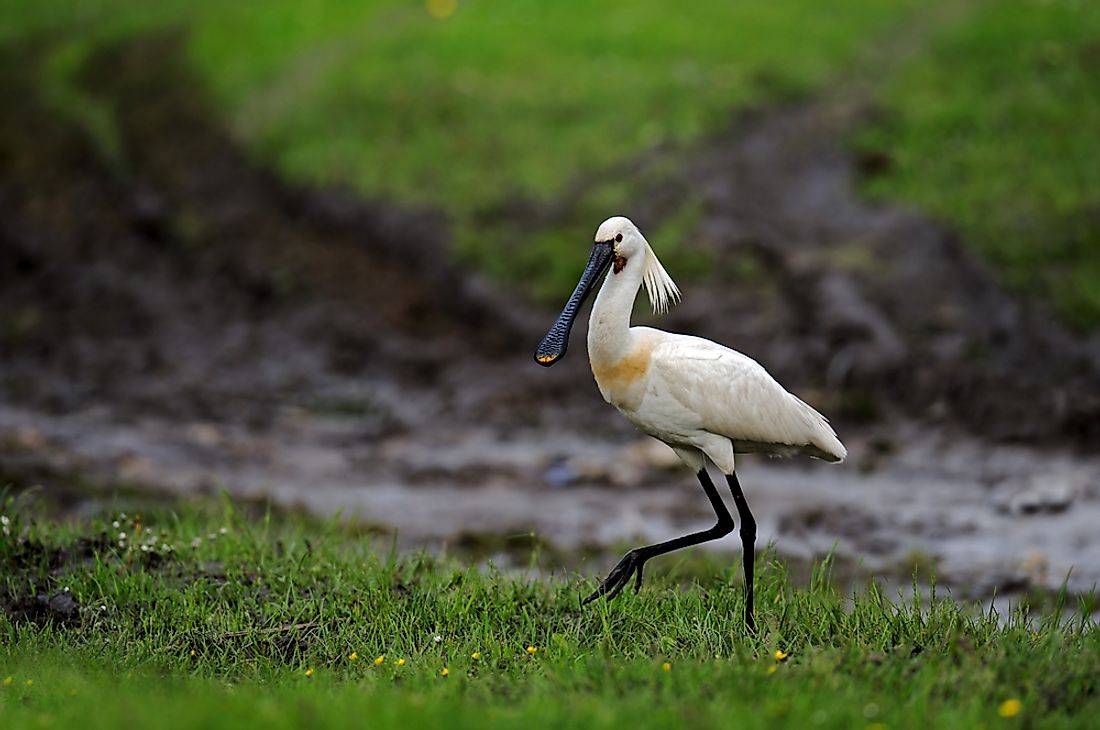
The Platalea leucorodia has a wide range stretching from Europe to Japan. The bird is also found in North Africa. During winter, the birds migrate south to the tropics. The Eurasian spoonbill has white plumage, black bill, and black legs. The bill has a yellow patch at the tip. During the breeding season, the birds develop a yellow breast patch and a crest. There are three subspecies of this bird, the P. l. leucorodia, P. l. balsaci, and the P. l. archeri. The habitat of these birds includes shallow wetland areas like marshes, mangroves, lakes, rivers, etc. They prefer wetlands with islands, extensive reed beds, or areas with scattered trees so that they can build their nests. The Eurasian spoonbills feed on crustaceans, insects, mollusks, amphibians, etc. Habitat loss and habitat degradation due to pollution are the biggest threats to the spoonbill species.
5. Black-Faced Spoonbill
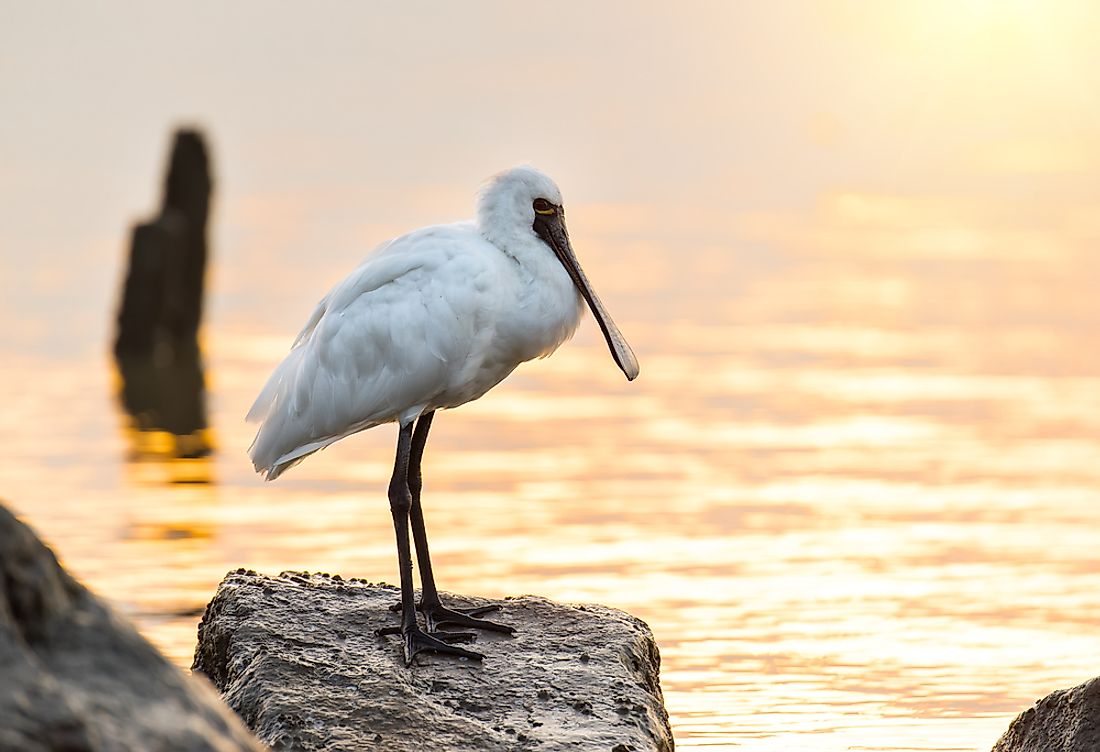
The Platalea minor is the most threatened species of spoonbill. The bird is found in the coastal areas of eastern Asia but its population and distribution have severely declined over the years. The spoonbill has a white plumage, black bill, face, and legs. The bird is a crepuscular feeder that takes advantage of the low tide to feed on aquatic fauna in shallow, coastal waters. IUCN recognizes the black-faced spoonbill as an endangered species that is threatened by deforestation and pollution in its habitat. As of 2012, there were only about 2,693 individuals of this species including only about 1600 mature individuals.
4. African Spoonbill
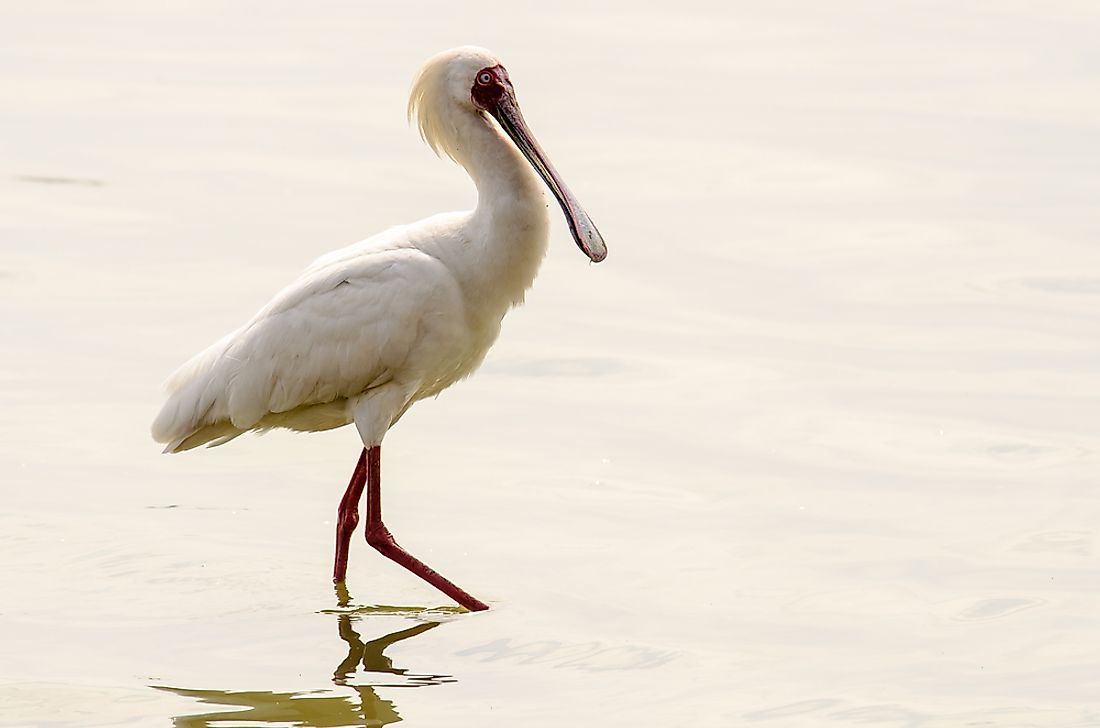
The Platalea alba is found in Africa including the Madagascar island. It lives in marshy wetland habitats and nests on trees or reedbeds in its habitat. The birds have white plumage, red face and legs, and a gray bill. They feed on fish, amphibians, crustaceans, and insects in the water.
3. Royal Spoonbill/Black-billed Spoonbill
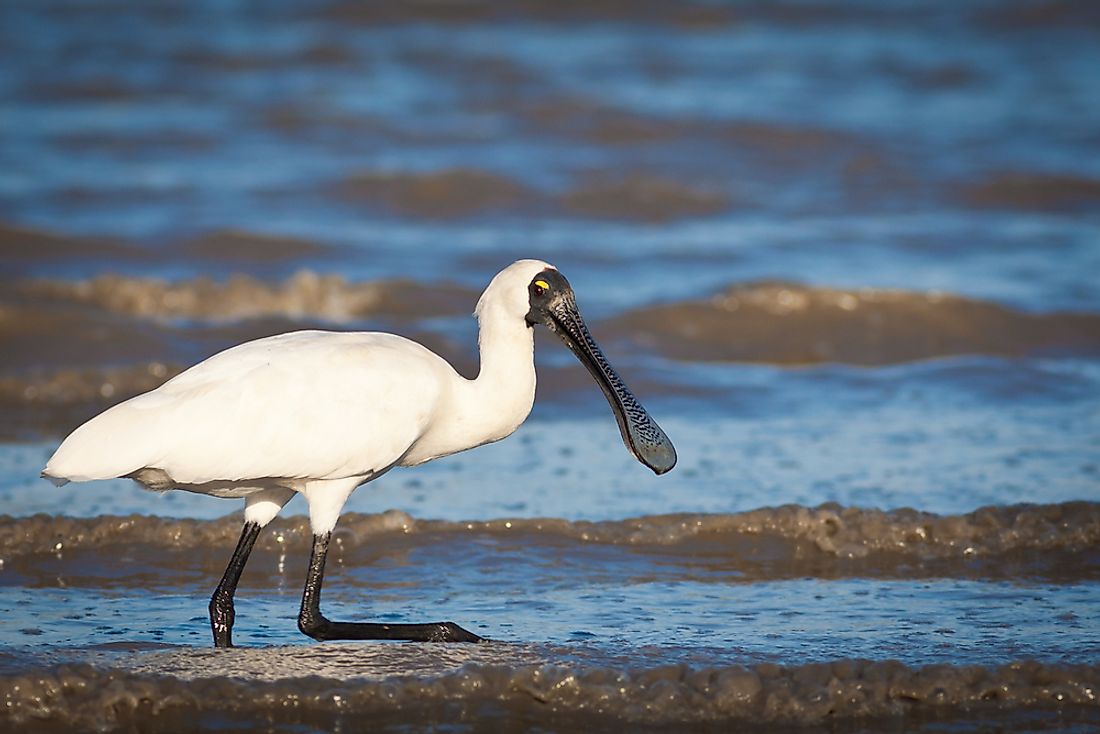
The Platalea regia is a spoonbill species whose range includes parts of Oceania and South-east Asia including Australia, New Zealand, Solomon Islands, Papua New Guinea, and Indonesia. These birds are found in shallow freshwater or saltwater wetland habitats and intertidal flats. The birds range in size from 74 to 81 cm. The plumage is white and the bill is black in color. The wading bird has long legs that allow it to walk through water. Fish, crabs, shellfish, and amphibians serve as the prey for these birds.
2. Roseate Spoonbill
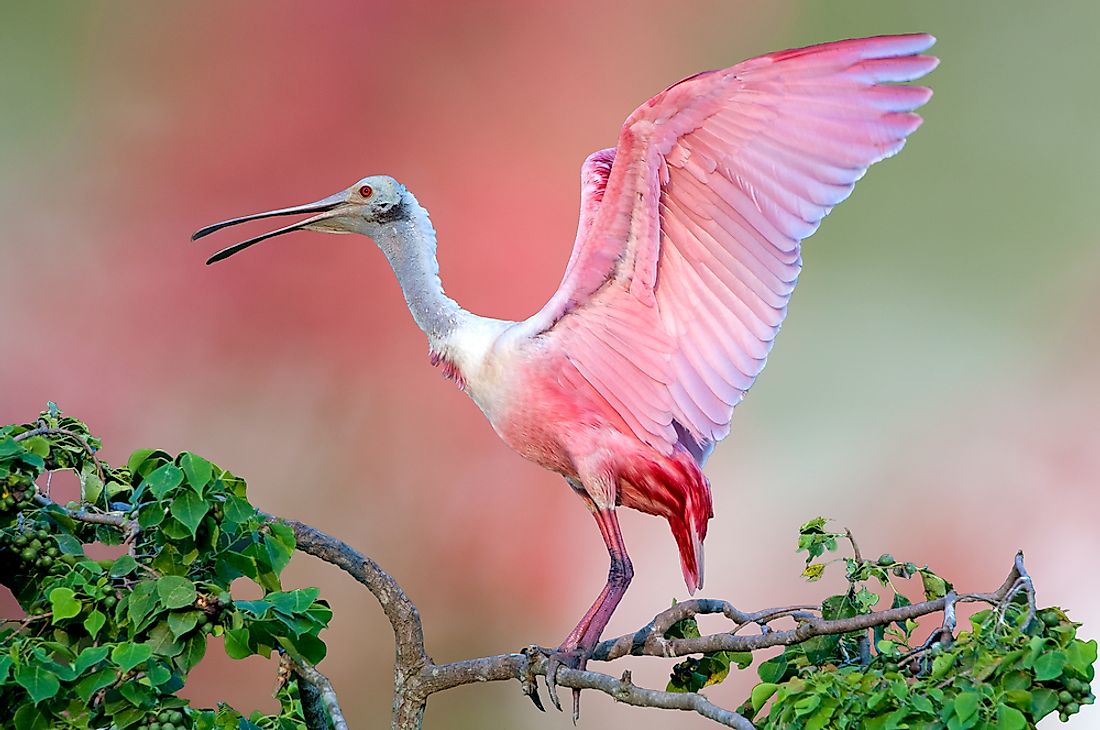
The Platalea ajaja is a spoonbill species whose range stretches from South America (east of the Andes) to Mexico in North America. The bird is also found in the Caribbean, and the Gulf Coast and the Atlantic Coast of the US. The birds are 71 to 86 cm long and have a bare greenish head, gray bill, white colored neck, breast, and back, and the others parts are pink in color. Like the flamingos, the pink color of the birds is derived from their diet. The birds feed on crustaceans, frogs, newts, aquatic insects, etc., in coastal waters or other shallow water habitats. They form their nests in trees and shrubs where the females lay 2 to 5 eggs.
1. Yellow-billed Spoonbill
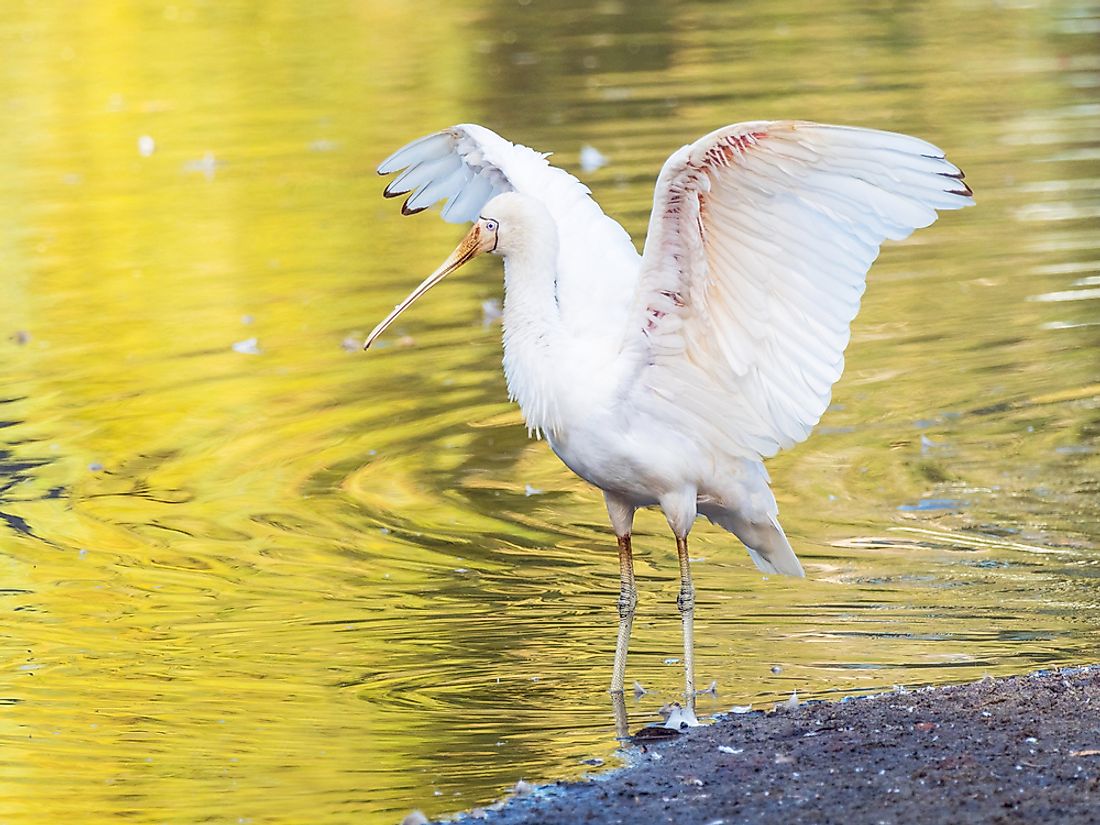
The Platalea flavipes is a spoonbill species that inhabit Australia. Although it is mainly found in southeast Australia, populations are also spotted in other parts of the continent. The bird has a size of about 90 cm. The bill, legs, and feet of the bird are yellow in color. The bird has white plumage. Within its range, the bird inhabits shallow wetlands and is less frequently spotted in dry pastures. The birds nest in trees, reed-beds, and marshy land. They use their spoon-shaped bill to feed on aquatic life.







